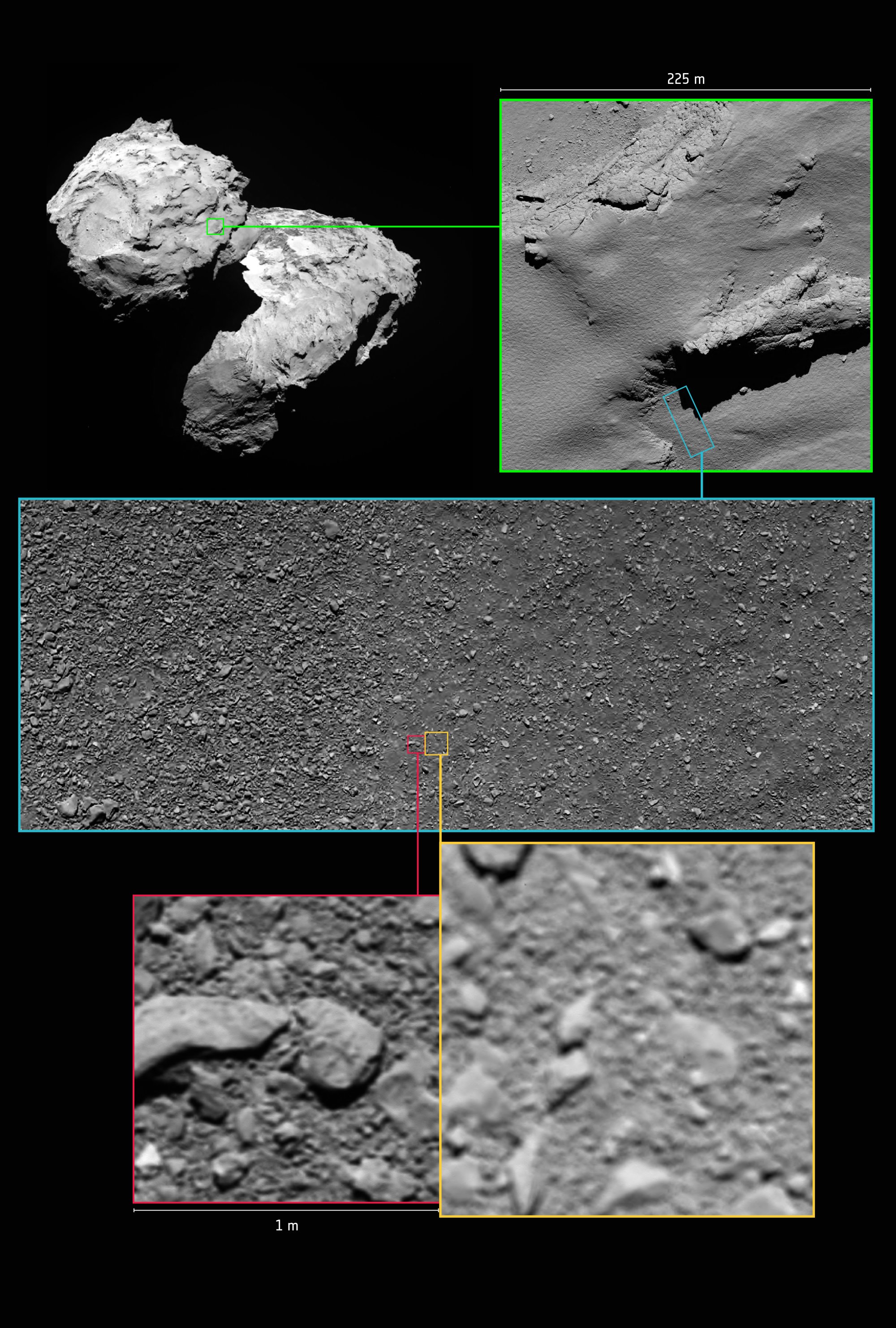Blurry And Unexpected Surprise – Final Photo Sent By Rosetta’s Historic Mission
MessageToEagle.com – Immediately before it shut down on the surface of the comet last year, Rosetta sent one last image of its touchdown site. Scientists analyzed Rosetta’s final telemetry.
Among many detailed images and scientific data on the comet’s gas, dust and plasma, there was one last surprise in store for the camera team, who managed to reconstruct the final telemetry packets into a sharp image.

“The last complete image transmitted from Rosetta was the final one that we saw arriving back on Earth in one piece moments before the touchdown at Sais,” says Holger Sierks, principal investigator for the OSIRIS camera at the Max Planck Institute for Solar System Research in Göttingen, Germany.
“Later, we found a few telemetry packets on our server and thought, wow, that could be another image.”
For the very last image the transmission was interrupted after three full packets were received, with 12 228 bytes received in total, or just over half of a complete image. This was not recognised as an image by the automatic processing software, but the engineers in Göttingen could make sense of these data fragments to reconstruct the image.

After more than 12 years in space, and two years following Comet 67P/Churyumov–Gerasimenko as they orbited the Sun, Rosetta’s historic mission concluded on 30 September with the spacecraft descending onto the comet in a region hosting several ancient pits.
During operations, images were split into telemetry packets aboard Rosetta before they were transmitted to Earth. In the case of the last images taken before touchdown, the image data, corresponding to 23 048 bytes per image, were split into six packets.
For the very last image the transmission was interrupted after three full packets were received, with 12 228 bytes received in total, or just over half of a complete image. This was not recognized as an image by the automatic processing software, but the engineers in Göttingen could make sense of these data fragments to reconstruct the image.
MessageToEagle.com
Expand for references









